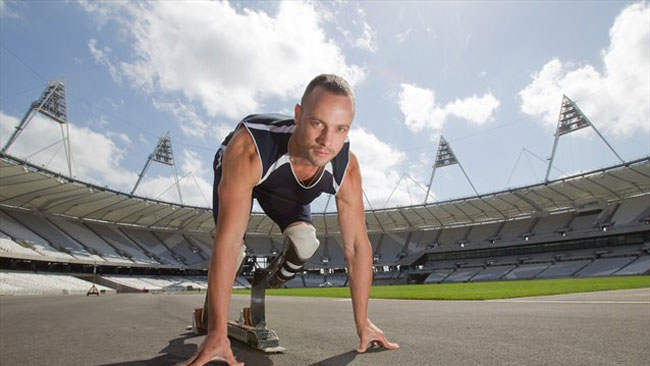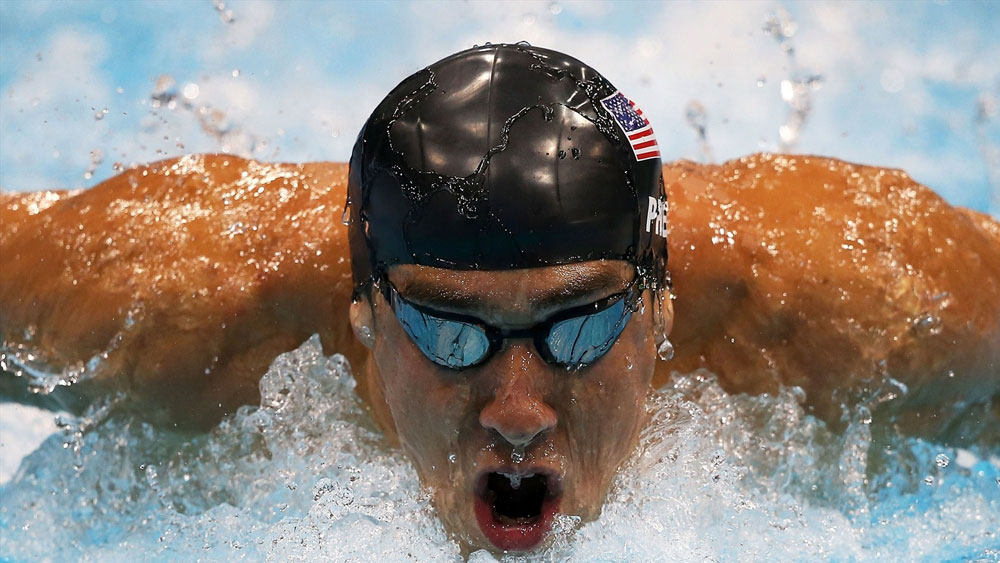Are Humans or Technology Breaking Olympic Records?

When Oscar Pistorius fought successfully to compete in the 2012 London Olympic Games with his two artificial legs, he became the most visible challenge to many people's Olympian ideal of celebrating human athletic performance without technological tweaks or other enhancements.
Yet the attention focused on Pistorius, whose legs earned him the nickname "Blade Runner," mostly overlooks technology's unsung role in helping humans break Olympic records over the past decades.
Pistorius originally won gold medals in the Paralympic Games, where technology has lent a very visible helping hand (or leg) to impaired athletes in the form of wheelchairs and prosthetic limbs. But technology has also stealthily boosted athletic performances in Olympic sports ranging from high-tech cycling to javelin throwing — even if its contribution to sporting success goes unacknowledged by cheering crowds during medal ceremonies.
"I would have to ask what is the difference between Paralympic wheelchair racing and what the British cycling team has done over the last 10 years or so," said Ian Brittain, project manager for "Peace, Olympics, Paralympics" at the Centre for Peace and Reconciliation Studies at Coventry University in the U.K.
The Pistorius case alone reveals the deep irony in society's views toward technology in sports and normal life, said Brittain, author of "The Paralympic Games Explained." He pointed out the societal tendency to view impaired people as "less than human" because their bodies are different, yet Pistorius also received flak for having an advantage with his prosthetics and becoming "more than human."
Technological booster shot
Overall, Olympic sports have made headlines more often for taking a stand against "technological doping" rather than cheering on new technological breakthroughs. The Union Cycliste Internationale moved to get rid of "superbikes" — bicycles containing aerodynamic materials and designs pioneered by the defense and aerospace industries — after the 1996 Atlanta Olympic Games. Its resulting Lugano Charter bans many of the latest cycling technologies developed in the past 20 years.
Get the world’s most fascinating discoveries delivered straight to your inbox.
In a similar gesture, the Federation Internationale de Natation banned full-body swimsuits after Olympians wearing Speedo's LZR Racer swimsuit won 94 percent of the swimming medals and broke 15 long-course world records at the 2008 Beijing Olympic Games. [How 'Fast Pool' Tech Helps Olympic Swimmers]
But such bans can't avoid the fact that "technology is as much a part of an athlete's armory as nutrition, training and coaching," according to a July report by the Institution of Mechanical Engineers called "Sports Engineering: An Unfair Advantage?" The report pointed to technology's role in "sporting success" going back to the ancient Greeks who first shaped an aerodynamic discus out of stone.
Steve Haake, a sports engineer at Sheffield Hallam University in the U.K., investigated technology's contribution to better Olympic performances in a 2009 paper. He found that technology alone contributed to a 30 percent increase in both pole vault and javelin performances. In pole vaulting's case, a new fiberglass pole that replaced the old metal pole allowed athletes to break the world record 19 times in a single decade starting in 1961.
Technology gave an even bigger boost to cycling. About 100 percent out of the 221 percent overall improvement in the one-hour cycling record came from better bicycle aerodynamics, Haake calculated.
The arms and legs race
Better technology has undeniably shaped the Olympics, but people want to celebrate athletes for their hard work rather than their use of the latest sports hardware. David James, a sports engineer from Sheffield Hallam University, uncovered the most common concerns with sports technology by holding meetings attended by more than 20,000 members of the public.
People feared that sports engineering could overshadow the triumph of human spirit and effort and make certain sports easier. They also worried that the "best athletes" might not win, and that sports engineering gave rich athletes and countries an advantage over the poor (a common complaint in particular for Winter Olympic sports).
Such fears have also surfaced in the Paralympic Games where Pistorius first made his mark as an athlete. Paralympic medal winners have usually come from Western nations that have the most advanced wheelchair or prosthetic limbs in a technological "leg race," said David Howe, a sports anthropologist at Loughborough University in the U.K., in a 2011 paper called "Cyborg and Supercrip." [Are Oscar Pistorius' Prosthetic Limbs an Unfair Advantage?]
Better technologies have played an even greater role in the Paralympics than the Olympics. Wheelchair racers have gone from being much slower than able-bodied runners to becoming much faster because of wheelchair technology — the record in the 800 meter event dropped from 1:55.67 in the 1980s to 1:32.17 today.
But Paralympic sports that rely on visible technologies such as wheelchairs or prosthetic limbs can easily overshadow Paralympic sports that feature athletes with cognitive rather than physical impairments. That's a huge factor when it comes to public attention, media coverage and sponsorship money.
"The general public sees a wheelchair racer moving faster than a man can run — the ability is obvious," Howe told InnovationNewsDaily. "For someone who is impaired with cerebral palsy and is an ambulant runner, they will not reach the same performances."
Technology for everyone
Governing bodies for Olympic sports should actively monitor the latest technologies that could affect sports performances and plan rather than react, according to the Institution of Mechanical Engineers report. But it also highlighted the risks of restricting sports technology too much.
After all, Olympic sports such as tennis have overseen the advance of technologies from wooden rackets to graphite rackets without ruining the spirit of the games. Just as important, many sports technologies allow the vast majority of amateurs outside the small elite groups of professional athletes to have more fun.
The technology race in the Paralympics has an added bonus outside of athletic enjoyment — better sports technologies can lead to better wheelchairs and prosthetic limbs used by impaired people in their daily lives. Such technological spinoffs make the Paralympics somewhat similar to Formula 1 racing transforming technologies in consumer cars, Howe explained.
"Today's everyday movement technology is far superior to the sporting technology of 30 years ago," Howe said.
This story was provided by InnovationNewsDaily, a sister site to LiveScience. You can follow InnovationNewsDaily Senior Writer Jeremy Hsu on Twitter @ScienceHsu. Follow InnovationNewsDaily on Twitter @News_Innovation, or on Facebook.





